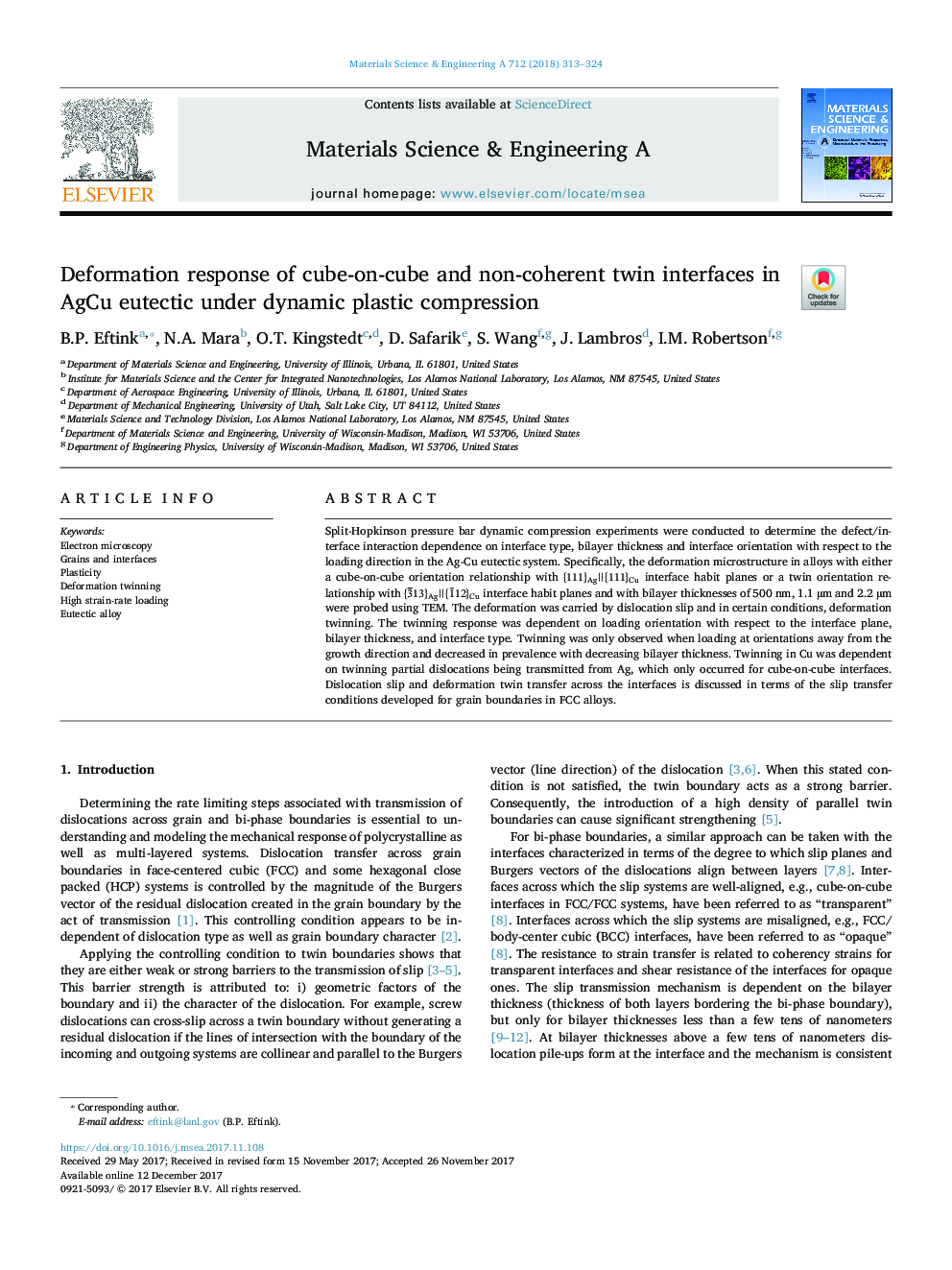| Article ID | Journal | Published Year | Pages | File Type |
|---|---|---|---|---|
| 7973954 | Materials Science and Engineering: A | 2018 | 12 Pages |
Abstract
Split-Hopkinson pressure bar dynamic compression experiments were conducted to determine the defect/interface interaction dependence on interface type, bilayer thickness and interface orientation with respect to the loading direction in the Ag-Cu eutectic system. Specifically, the deformation microstructure in alloys with either a cube-on-cube orientation relationship with {111}Ag||{111}Cu interface habit planes or a twin orientation relationship with {3Ì
13}Ag||{1Ì
12}Cu interface habit planes and with bilayer thicknesses of 500 nm, 1.1 µm and 2.2 µm were probed using TEM. The deformation was carried by dislocation slip and in certain conditions, deformation twinning. The twinning response was dependent on loading orientation with respect to the interface plane, bilayer thickness, and interface type. Twinning was only observed when loading at orientations away from the growth direction and decreased in prevalence with decreasing bilayer thickness. Twinning in Cu was dependent on twinning partial dislocations being transmitted from Ag, which only occurred for cube-on-cube interfaces. Dislocation slip and deformation twin transfer across the interfaces is discussed in terms of the slip transfer conditions developed for grain boundaries in FCC alloys.
Related Topics
Physical Sciences and Engineering
Materials Science
Materials Science (General)
Authors
B.P. Eftink, N.A. Mara, O.T. Kingstedt, D. Safarik, S. Wang, J. Lambros, I.M. Robertson,
